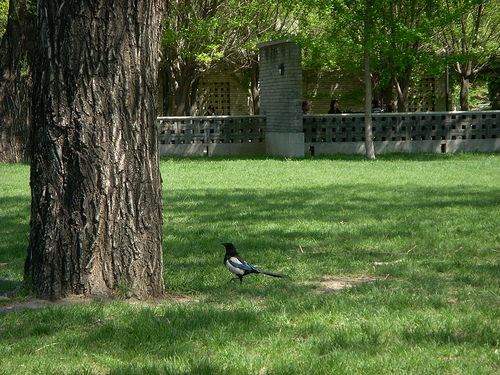I have nothing against a paleolithic diet, but I think its advocates, like many experts, are overconfident. It’s not easy to know which features of a diet that varies in 20 ways from modern diets are the crucial ones. I came across this while reading about paleolithic diets:
The general gist of eating like a caveman—namely, focusing on foods in their whole, natural state, is not going to get much argument. “It comes down to the advice your mother gave you,” says Leonard [William Leonard, chair of the anthropology department at Northwestern University]. “Eat a balanced diet and a diversity of foods.”
I beg to differ.
1. Whole, natural state. I find flaxseed oil very helpful. It supplies omega-3 missing from my diet, but presumably present in diets that contained lots of seafood or vegetation-fed meat. Flaxseed oil is not food in a whole and natural state.
2. Whole, natural state . I find fermented food very helpful. Bacteria break down food, making it less whole. Modern food of all sorts is unnaturally low in bacteria (due to refrigeration, food safety laws, shelf-life requirements, etc.), just as modern meat is unnaturally low in omega-3. Fermented food is unnaturally high in bacteria, correcting the deficit.
3. The advice your mother gave you. Traditional diets, yes, what your mom thinks, no. When I was growing up we ate margarine instead of butter — poor choice. We had skim milk, not whole milk — poor choice. The absence of butter and whole milk is, if Weston Price is right, why my teeth are slightly crooked. We ate almost no fermented food — very poor choice. (Which I suspect is why I had mild allergies.) We rarely ate fish — poor choice. And yet we didn’t have a TV — very good, very unusual choice. Even my mom, who thought for herself far more than most moms, had serious misconceptions about nutrition. Given the epidemic of childhood obesity, not to mention less visible increases in autism, allergies, and ADHD, I am very skeptical that the average kid’s mom knows what to eat.
4. Eat a balanced diet. Plenty of communities in excellent health eat diets that American experts would describe as not balanced at all — no fruit for example, or too much dairy. Eskimos and the Swiss in isolated villages studied by Weston Price are two examples. Price found that a wide range of diets, most violating one or more popular nutritional precepts, produced excellent health.
5. A diversity of foods. Several healthy communities studied by Price did not eat a wide range of foods. The human diet became a lot more diverse around the time of the “ broad-spectrum revolution” — broad-spectrum meaning wider range of food. Around that time human height decreased. Apparently the new, more diverse diet was less healthy than the old diet. An anthropology professor might know this.
The title of this post comes from the book The Experts Speak which is full of examples of how experts were wildly wrong.
